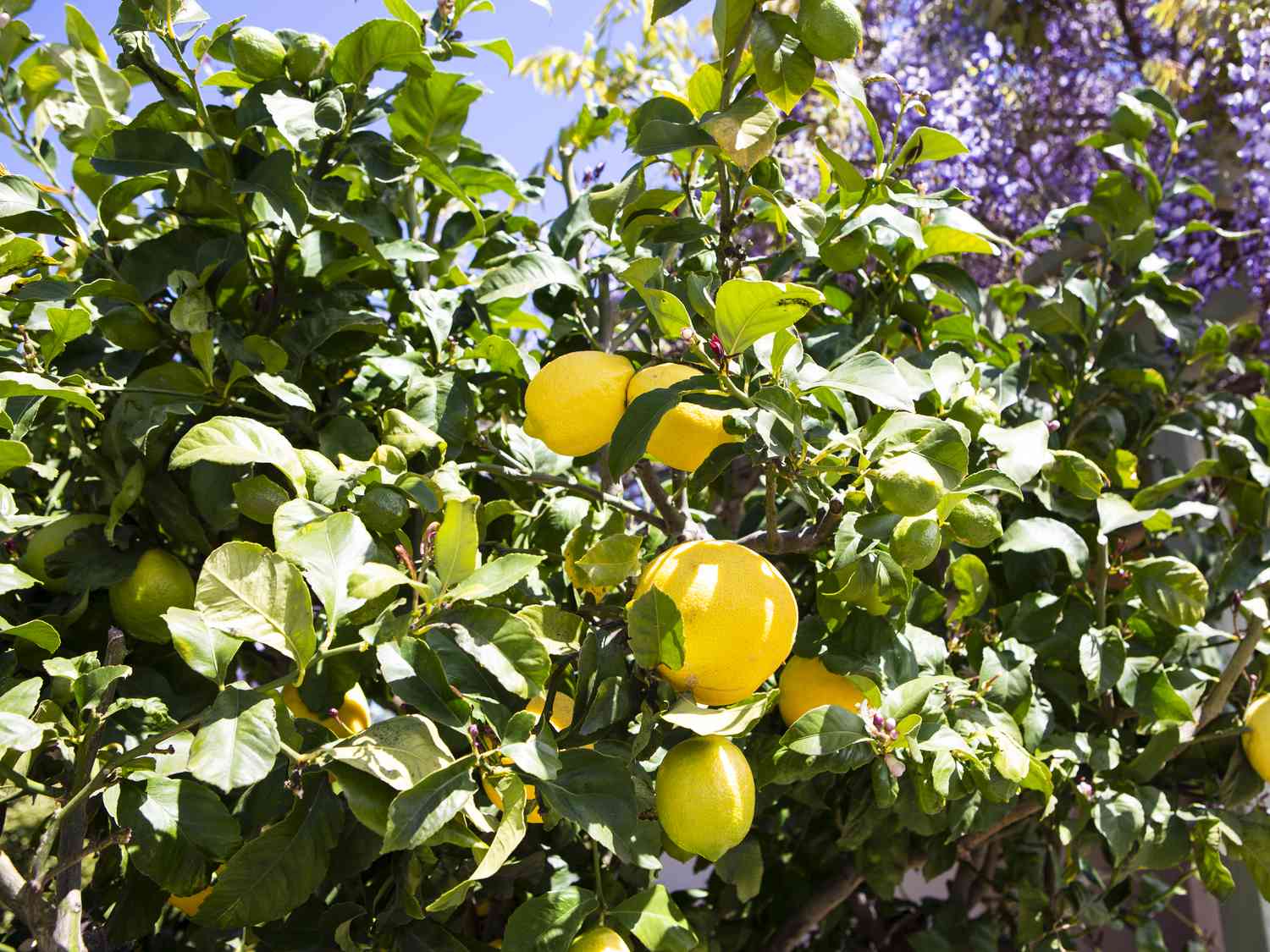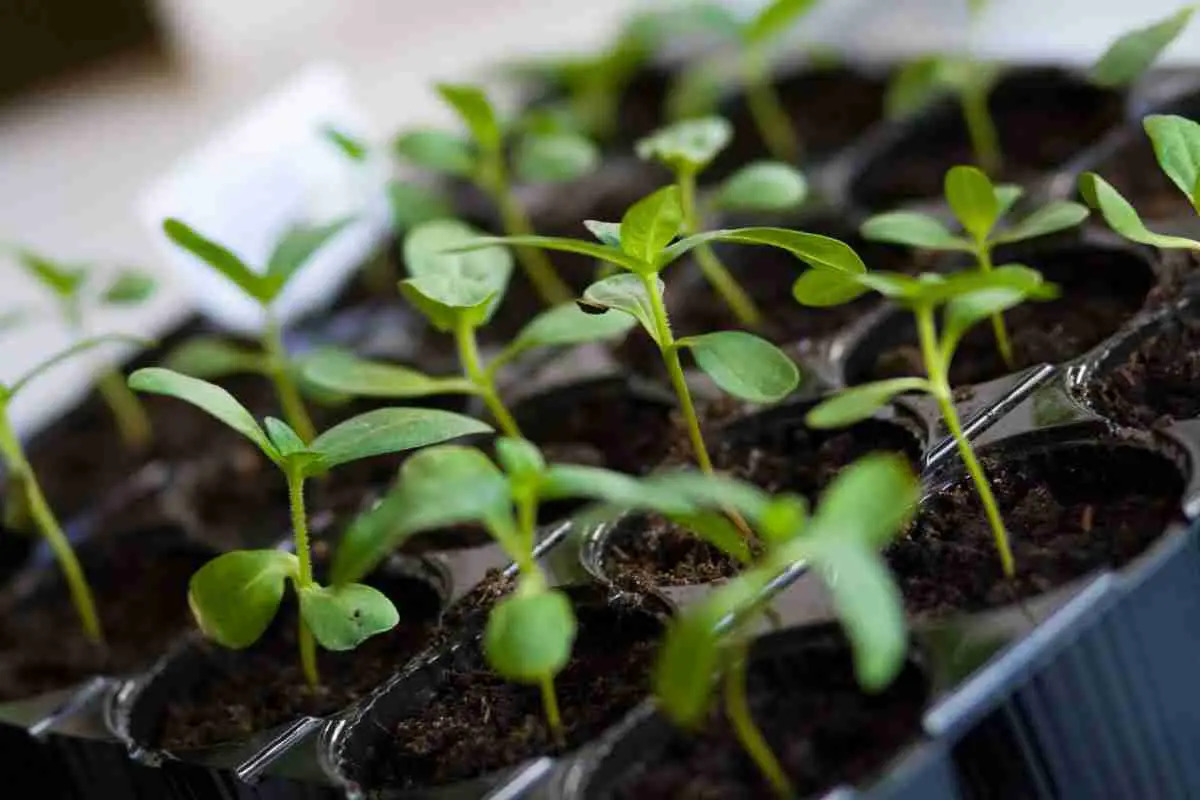Home>Gardening Techniques>Plant Care>How Much Sunlight Do Lemon Trees Need


Plant Care
How Much Sunlight Do Lemon Trees Need
Published: October 28, 2023
Learn about the plant care for lemon trees, including how much sunlight they need. Ensure your lemon tree thrives with the right amount of sunlight.
(Many of the links in this article redirect to a specific reviewed product. Your purchase of these products through affiliate links helps to generate commission for Chicagolandgardening.com, at no extra cost. Learn more)
Table of Contents
- Introduction
- The Importance of Sunlight for Lemon Trees
- Factors Affecting Sunlight Requirements of Lemon Trees
- Ideal Sunlight Conditions for Lemon Trees
- Consequences of Insufficient Sunlight for Lemon Trees
- Tips for Providing Adequate Sunlight to Lemon Trees
- Protecting Lemon Trees from Excessive Sunlight
- Conclusion
Introduction
Welcome to the world of lemon trees! These vibrant and aromatic citrus trees have been cultivated for centuries, bringing zest, flavor, and beauty into our lives. Whether you’re a seasoned gardener or a beginner, it’s important to understand the key factors that contribute to the health and vitality of lemon trees. One crucial element that plays a pivotal role in their growth and overall well-being is sunlight.
Sunlight is the lifeline for lemon trees, providing them with energy through photosynthesis and influencing various physiological processes. Just like humans, lemon trees thrive under the right conditions, and sunlight is a vital part of their daily needs. However, it’s not solely a matter of exposing your lemon tree to sunlight; there are specific factors to consider and optimal conditions to provide for its well-being.
In this article, we will explore the importance of sunlight for lemon trees, the factors that affect their sunlight requirements, ideal sunlight conditions, the consequences of inadequate sunlight, and tips on providing adequate sunlight. So, let’s dig deeper and discover how to give your lemon tree the sunshine it needs to flourish!
The Importance of Sunlight for Lemon Trees
Sunlight is vital for the health and growth of lemon trees. As photosynthetic organisms, lemon trees rely on sunlight to produce glucose, which serves as their primary energy source. Sunlight provides the energy needed to convert carbon dioxide and water into glucose and oxygen through photosynthesis. This process fuels the growth, development, and overall vitality of the lemon tree.
Moreover, sunlight plays a crucial role in regulating essential physiological processes within the lemon tree. It helps in the production and distribution of plant hormones, such as auxins and gibberellins, which influence cell division, elongation, and fruit development. Adequate exposure to sunlight promotes stronger root systems, healthier foliage, and overall better fruit production. It also enhances the flavor and aroma of the lemon fruit.
Not only does sunlight affect the internal workings of the lemon tree, but it also has external benefits. Sunlight provides natural disinfecting properties, minimizing the risk of diseases and pests that thrive in shaded and damp environments. Direct sun exposure helps to dry foliage, reducing the likelihood of fungal infections and other plant diseases.
In addition to its physiological benefits, sunlight has a positive impact on the mental and emotional well-being of lemon tree owners. The vibrant rays of sunlight can uplift moods and create a serene ambiance in the garden or patio. Watching your lemon tree bask in the warm glow of the sun can be a therapeutic and fulfilling experience.
All in all, sunlight is essential for the growth, development, and overall health of lemon trees. It provides the energy for photosynthesis, regulates important physiological processes, enhances fruit production, and contributes to a disease-free environment. Understanding the importance of sunlight will guide you in providing the necessary conditions for your lemon tree to thrive.
Factors Affecting Sunlight Requirements of Lemon Trees
While it is clear that sunlight is crucial for the well-being of lemon trees, there are several factors that can influence their specific sunlight requirements. Understanding these factors will help you create the optimal conditions for your lemon tree to flourish.
1. Tree Age: The age of the lemon tree plays a role in its sunlight requirements. Younger trees typically require more sunlight to support their rapid growth and establish a strong root system. As lemon trees mature, their sunlight requirements may decrease slightly, but they still need a significant amount of sunlight to maintain their health and fruit production.
2. Variety of Lemon Tree: Different lemon tree varieties have varying tolerances to sunlight. Some varieties thrive in full sun conditions, while others may prefer partial shade. It’s important to research the specific variety you have and determine its sunlight preferences to provide the appropriate amount of light.
3. Climate: The climate in which your lemon tree is located can significantly impact its sunlight requirements. Lemon trees in cooler climates may benefit from more sunlight to compensate for limited overall exposure. In hotter regions, providing some shade during the hottest part of the day can help prevent sunburn and heat stress.
4. Location: The location of your lemon tree within your garden or landscape also affects its sunlight requirements. If the tree is situated near tall structures or other trees, it may receive less direct sunlight due to shading. Conversely, if the tree is placed in an open area with no obstructions, it will have ample access to sunlight.
5. Season: Sunlight requirements can vary throughout the different seasons of the year. Lemon trees typically require more sunlight during the growing season, as they are actively producing foliage, flowers, and fruit. In contrast, during dormant periods, less sunlight may be needed since the tree’s metabolic activity is reduced.
6. Time of Day: The timing of sunlight exposure also matters for lemon trees. They tend to benefit from morning sunlight, which is milder and less intense than the afternoon sun. Morning sunlight helps dry the foliage and prepare the tree for the heat of the day. However, lemon trees still need several hours of direct sunlight to thrive.
Understanding these factors will enable you to assess and adjust the sunlight requirements of your lemon tree accordingly. By considering the age of the tree, variety, climate, location, season, and time of day, you can provide the optimal amount of sunlight for your lemon tree’s specific needs.
Ideal Sunlight Conditions for Lemon Trees
Lemon trees thrive when they receive adequate sunlight. To ensure optimal growth and fruit production, it’s essential to provide them with the ideal sunlight conditions. Here are some guidelines to consider:
1. Full Sun Exposure: Lemon trees generally require full sun exposure, which means a minimum of 6 to 8 hours of direct sunlight daily. This allows the tree to carry out photosynthesis efficiently and promotes healthy leaf and fruit development.
2. Avoid Excessive Shade: While some shade during the hottest part of the day can be beneficial in very hot climates, it’s important to balance it with ample sunlight. Avoid planting your lemon tree in areas with too much shade, as it can hinder growth and reduce fruit production.
3. Proper Orientation: When selecting a spot for your lemon tree, consider its orientation. Planting it where it receives the most sunlight during the day is ideal. For example, in the Northern Hemisphere, a south-facing location will provide the most consistent sunlight exposure.
4. Protection from Strong Winds: While lemon trees require sunlight, they can be sensitive to strong winds. Planting them in a spot shielded from strong winds or providing windbreaks can prevent damage to the tree and maintain stable growing conditions.
5. Consider Microclimates: Different areas within your garden may have slightly different microclimates, which can impact sunlight exposure. Take note of areas that may have better sun exposure, such as open spaces or areas with reflective surfaces that help maximize sunlight absorption.
6. Adjust for Climate: In extremely hot climates, providing some shade during the hottest part of the day can help prevent sunburn and heat stress. This can be achieved by using shade cloths or strategically positioning the tree to benefit from natural shade from nearby structures or trees.
Remember that these ideal sunlight conditions serve as guidelines, and some flexibility may be required depending on your specific climate and location. Observing how your lemon tree responds to the sunlight conditions and making adjustments accordingly will help ensure its health and vitality.
Consequences of Insufficient Sunlight for Lemon Trees
Insufficient sunlight can have detrimental effects on the health and growth of lemon trees. When lemon trees do not receive enough sunlight, they may experience several consequences:
1. Poor Growth: Sunlight is essential for photosynthesis, the process by which plants convert sunlight into energy. Without enough sunlight, lemon trees will struggle to produce the necessary energy for growth. This can lead to stunted growth, weak branches, and an overall underdeveloped tree.
2. Reduced Fruit Production: Lemon trees require adequate sunlight to produce an abundant harvest. Insufficient sunlight can result in a decrease in the number and size of the lemon fruits. The fruits may also have a lower quality, with less vibrant color and reduced flavor.
3. Weakened Immunity: Sunlight plays a crucial role in strengthening the immune system of lemon trees. When they lack sufficient sunlight, their defenses against pests and diseases are compromised. This leaves them more susceptible to infestations and infections, which can further impact their growth and overall health.
4. Increased Risk of Fungal Diseases: Insufficient sunlight can create a humid and damp environment around the lemon tree, especially in shaded areas. This can promote the growth of fungal diseases, such as powdery mildew and citrus scab. These diseases can cause leaf and fruit damage, further impacting the tree’s vitality.
5. Delayed Flowering and Fruit Set: Lemon trees require a certain amount of sunlight to stimulate flowering and fruit set. Without enough light, the tree may experience delayed or inconsistent blooming, leading to a reduced fruit production. This can also cause frustration for gardeners who eagerly wait for their lemon tree to bear fruit.
6. Thinning Foliage: When lemon trees do not receive adequate sunlight, their foliage may become sparse and thin. The leaves may turn pale or yellow, indicating a lack of chlorophyll production. Thinning foliage reduces the tree’s ability to capture sunlight, exacerbating the problem further.
It’s crucial to provide sufficient sunlight to your lemon tree to prevent these consequences. By ensuring that your tree receives the required amount of direct sunlight, you can maintain its growth, maximize fruit production, and enhance its overall health and resilience.
Tips for Providing Adequate Sunlight to Lemon Trees
Ensuring that your lemon tree receives adequate sunlight is essential for its growth and productivity. Here are some helpful tips to provide the right amount of sunlight:
1. Choose the Right Location: Select a location for your lemon tree that receives full sun exposure for at least 6 to 8 hours a day. This area should be free from shade caused by buildings, trees, or other structures.
2. Orient the Tree: Plant your lemon tree in a north-south direction to maximize sunlight exposure throughout the day. This orientation helps ensure that all sides of the tree receive equal sunlight.
3. Prune Surrounding Trees: If there are tall trees or shrubs nearby that cast shade on your lemon tree, trim or prune them to allow more sunlight to reach your lemon tree. Removing any obstructions will help optimize sunlight exposure.
4. Utilize Reflective Surfaces: Use light-colored surfaces, like white stones or reflective mulch, around the base of your lemon tree. These surfaces can help reflect sunlight up towards the tree, maximizing the amount of light it receives.
5. Consider Container Gardening: If you have limited space or need to move your lemon tree to provide better sunlight, consider planting it in a container. This way, you can easily shift the tree’s position to capture the most sunlight throughout the day.
6. Use Shade Cloth: In extremely hot climates, provide some shade to protect your lemon tree from intense midday sun. Use shade cloths or create temporary structures to shield the tree during the hottest hours. However, ensure that the tree still receives ample sunlight for the rest of the day.
7. Regularly Monitor Sunlight Conditions: Keep a close eye on the sun patterns in your garden and make necessary adjustments as needed. Observe how the sunlight changes with the seasons and adjust the positioning of your lemon tree accordingly.
By following these tips, you can ensure that your lemon tree receives the proper amount of sunlight it needs to thrive. Providing adequate sunlight will promote healthy growth, strong fruit production, and overall success in cultivating a vibrant and fruitful lemon tree.
Protecting Lemon Trees from Excessive Sunlight
While adequate sunlight is vital for the health of lemon trees, excessive sunlight can also have negative effects. Here are some tips to protect your lemon tree from excessive sunlight:
1. Provide Partial Shade: In regions with intense heat and sunlight, provide some shade to protect your lemon tree during the hottest part of the day. This can be achieved by using shade cloths, umbrellas, or planting companion shade-providing plants nearby.
2. Use Mulch: Apply a layer of organic mulch around the base of the lemon tree. Mulch helps retain moisture in the soil, preventing it from drying out too quickly under the intense sun. It also helps regulate soil temperature and prevents weed growth that can compete with the lemon tree for nutrients and water.
3. Water Deeply and Regularly: During periods of excessive sunlight and heat, it’s important to provide adequate hydration for your lemon tree. Water deeply and regularly, ensuring that the soil remains moist. However, be careful not to overwater, as this can lead to root rot. Monitor the soil moisture levels and adjust your watering schedule accordingly.
4. Create Temporary Shade Structures: If your lemon tree is newly planted or in a particularly sunny area, create temporary shade structures. Use umbrellas, shade sails, or build a simple wooden frame covered with shade cloth to provide protection during peak sunlight hours. Ensure that the shade covers the entirety of the tree’s canopy.
5. Prune for Airflow: Proper pruning allows for better airflow and can help protect your lemon tree from excessive sunlight. Prune any overcrowded branches or dense foliage that may be blocking sunlight from reaching the canopy. This will also facilitate better air circulation, reducing the risk of heat stress.
6. Mist the Foliage: On exceptionally hot days, mist the foliage of your lemon tree with water. This helps cool down the leaves and create a more favorable microclimate. Avoid misting during the hottest part of the day, as this can lead to scorching or fungal issues.
By implementing these measures, you can safeguard your lemon tree from the potentially harmful effects of excessive sunlight. Maintaining a balance between providing sufficient sunlight and protecting against excessive exposure will ultimately contribute to the overall health and productivity of your lemon tree.
Conclusion
Sunlight is a crucial element in the care and growth of lemon trees. Providing the right amount of sunlight is essential for their overall health, fruit production, and vitality. By understanding the importance of sunlight, you can create optimal conditions for your lemon tree to thrive.
Factors such as tree age, variety, climate, location, season, and time of day all play a role in determining the sunlight requirements of lemon trees. It’s vital to consider these factors and adjust accordingly to ensure your tree receives the ideal sunlight conditions it needs.
Insufficient sunlight can result in poor growth, reduced fruit production, weakened immunity, increased risk of fungal diseases, delayed flowering, and thinning foliage. On the other hand, excessive sunlight can lead to sunburn, heat stress, and excessive transpiration. Striking the right balance is key.
To provide adequate sunlight to your lemon tree, choose a location with full sun exposure, prune surrounding trees that cast shade, and consider using reflective surfaces to maximize sunlight absorption. Adjustments may also be necessary based on your climate, such as providing partial shade and maintaining proper hydration.
Remember to regularly monitor the sunlight conditions in your garden and make necessary adjustments as needed. Prune for better airflow, protect against extreme weather conditions, and provide proper care to ensure the health and longevity of your lemon tree.
With the right amount of sunlight, your lemon tree will flourish, yielding abundant fruit with vibrant color, delicious flavor, and enticing aroma. So, create a sunny haven for your lemon tree and enjoy the beauty and benefits it brings to your garden or landscape!








